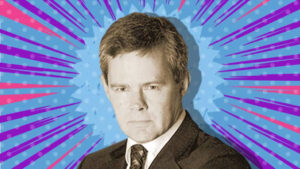Monsters of Rock: The IEA says market for energy transition metals has DOUBLED in just five years to US$320bn

Pic: Wavebreak/iStock via Getty Images
- IEA says critical minerals market worldwide has doubled to US$320 billion in just five years
- Investment in energy transition metals rose 30% last year as miners, OEMs and governments race to find new sources of lithium, copper, cobalt, nickel and more
- Miners up 1% as iron ore rises
Seems like battery metals are all anyone talks about these days in the news, on the internet, at the dinner table as you unload some of Seymour Skinner’s steamed hams on your unsuspecting guests?
The International Energy Agency’s Critical Minerals Market Review is out and it shows why, with the total size of the critical minerals market — headlined by lithium, copper, rare earths, nickel and graphite — doubling in the past five years to US$320 billion.
And numbers from 2022 show how steep that rise in focus from the world’s resources sector has been, with investments in energy transition metals lifting 30% worldwide after a 20% rise in 2021.
Chinese companies are accelerating even faster, almost doubling their investment in critical minerals in 2022, with lithium developers posting a 50% rise in spending.
Exploration spending rose 20% across the battery metals suite, with more than 40% rises in investment across Canada and Australia, the biggest focus areas for hard rock lithium drilling.
“In terms of commodities, lithium emerged as the clear leader in exploration activities, with spending increasing by 90%, following a 25% increase in 2021,” the IEA said.
“Uranium also experienced a significant increase in spending, rising by 60% due to renewed interest in nuclear power amid concerns over Russian supplies.
“Nickel was a close follower with a 45% growth rate for exploration, led by Canada where high-grade sulphide resources, proximity to existing infrastructure and access to low emissions electricity create attractive investment opportunities.”
This has all been driven of course by a massive rise in demand for the commodities, with EV sales rising 60% last year to over 10 million and another 35% jump expected this year.
“From 2017 to 2022, demand from the energy sector was the main factor behind a tripling in overall demand for lithium, a 70% jump in demand for cobalt, and a 40% rise in demand for nickel,” the IEA says.
“In 2022, the share of clean energy applications in total demand reached 56% for lithium, 40% for cobalt and 16% for nickel, up from 30% for lithium, 17% for cobalt and 6% for nickel five years ago.”
Do we have enough?
The IEA says if all planned critical mineral projects worldwide are realised then supply would be sufficient to meet the demands placed by climate pledges from governments around the world.
“However, the risk of project delays and technology-specific shortfalls leave little room for complacency about the adequacy of supply,” they said.
“And more projects would in any case be needed by 2030 in a scenario that limits global warming to 1.5 °C.”
In its latest estimates, based on announced pledges, the IEA thinks demand for copper will lift beyond 30Mt by 2030, with demand from electricity networks rising over 70% on 2022 levels to 7.44Mt and demand from EVs roughly quintupling to almost 1.6Mt.
Cobalt requirements would lift from ~180,000t to a touch under 300,000t, 112,900t from EVs, while lithium metal needs would lift from 130,650t to 451,000t by 2030, ~350,000t from EVs.
Lithium metal demand would scale beyond 1Mt annually by 2040, a level it would hit by 2035 in a Net Zero emissions by 2050 scenario.
The 50,000t neodymium market is expected to rise to over 75,000t, with demand for neodymium from EVs increasing from 3940t last year to 17,630t in 2030, while demand from wind turbines will more than double from 6670t to 13,350t.
Overall nickel demand could rise from a touch under 3Mt last year to over 4.5Mt by 2030, with EVs making up 1.5Mt, up from 325,000t last year, and EVs to overtake other traditional uses including stainless steel by 2040.
To that end, investment in battery metals is defying the bearishness seen elsewhere in the market amid recession risks, interest rate rises and a capital crunch.
Critical minerals saw a 160% lift year on year last year in venture capital funding with critical minerals start-ups raising a record US$1.6b, 4% of all clean energy VC funding globally.
A good day for the market
The materials sector closed the day up 1%, with iron ore producers the standouts as Chinese stimulus expectations drove the price of our headline commodity up 2.5% to US$108.40/t.
“Iron ore gained as Beijing stepped up efforts to support the struggling property sector. Regulators announced further support measures, including the postponement of some loan repayments,” ANZ economist Adelaide Timbrell noted.
“Lenders will also be encouraged to ramp up support to ensure delivery of homes under construction. However, new home sales in the country’s first-tier cities are flagging, with only Shanghai seeing a slight pickup last week.”
Gold miners also caught some attention with Capricorn Metals (ASX:CMM) up over 4%, its second strong trading day in a row after announcing it had met production guidance for FY23 at the Karlawinda gold mine in the Pilbara.
Monstars share price today:

UNLOCK INSIGHTS
Discover the untold stories of emerging ASX stocks.
Daily news and expert analysis, it's free to subscribe.
By proceeding, you confirm you understand that we handle personal information in accordance with our Privacy Policy.








